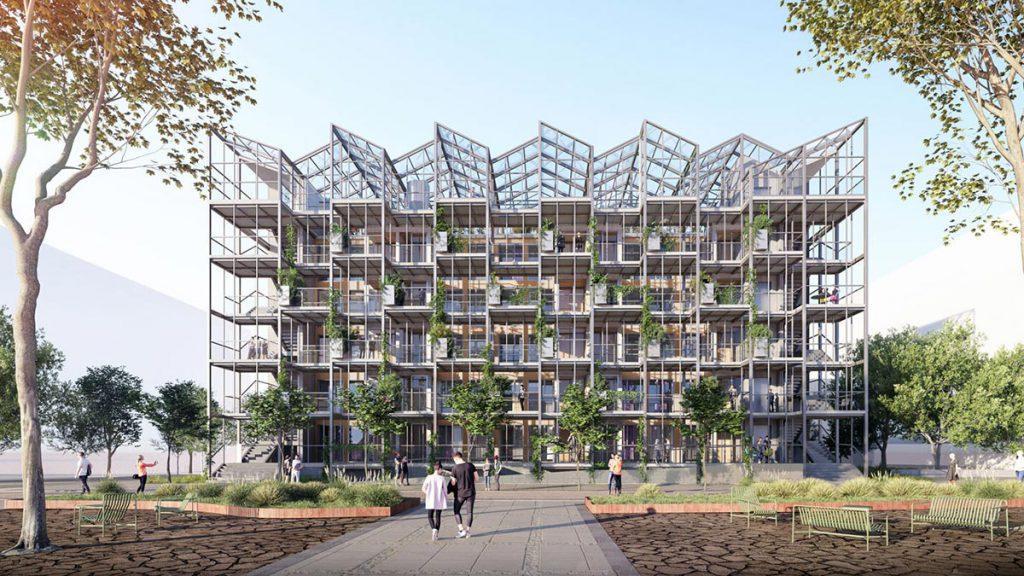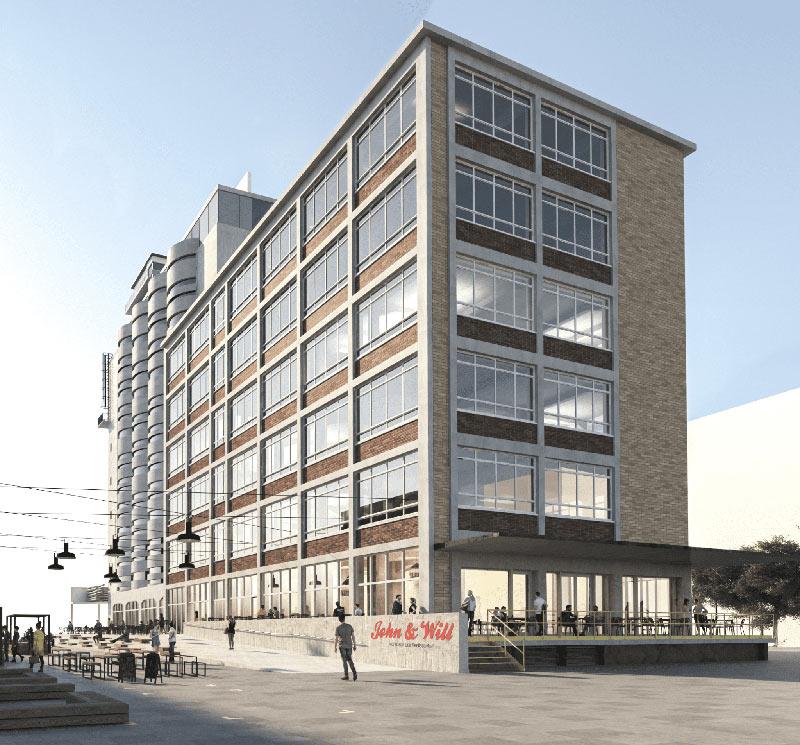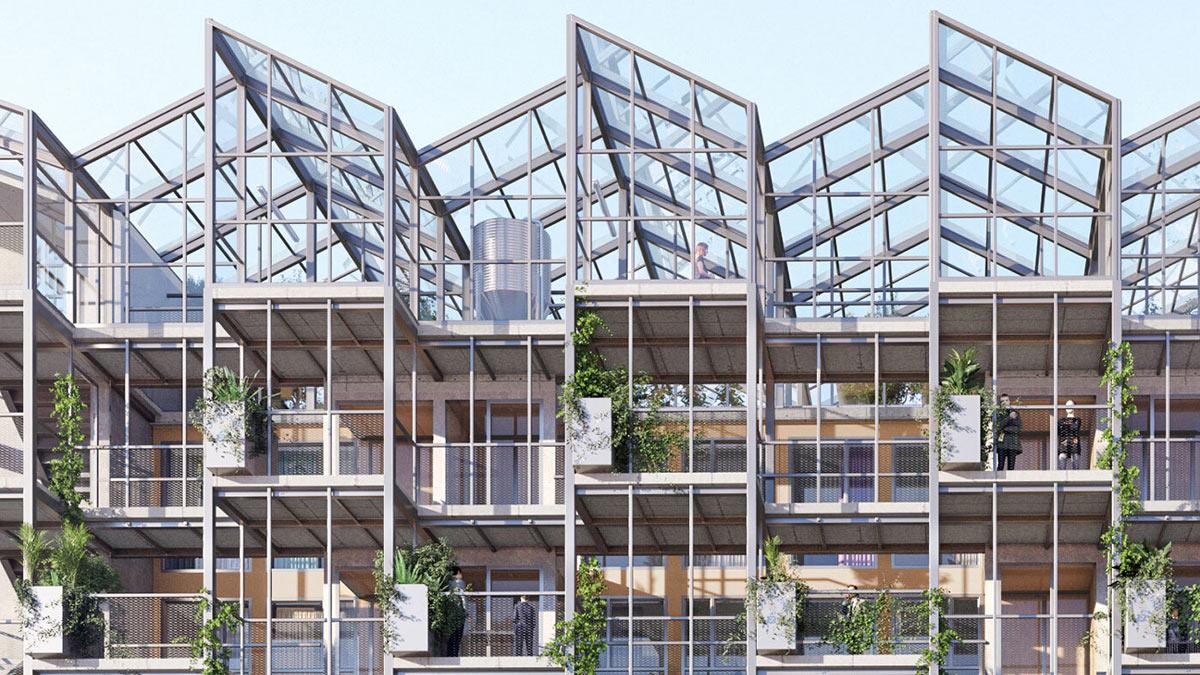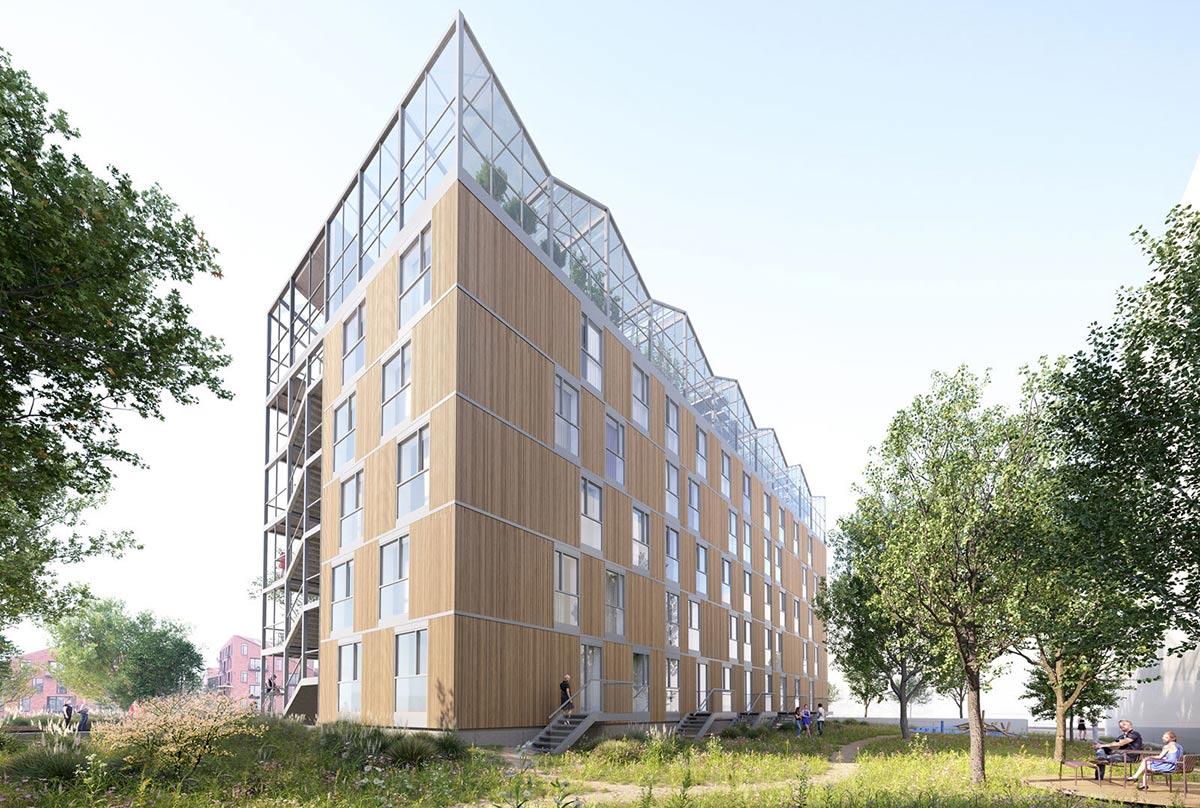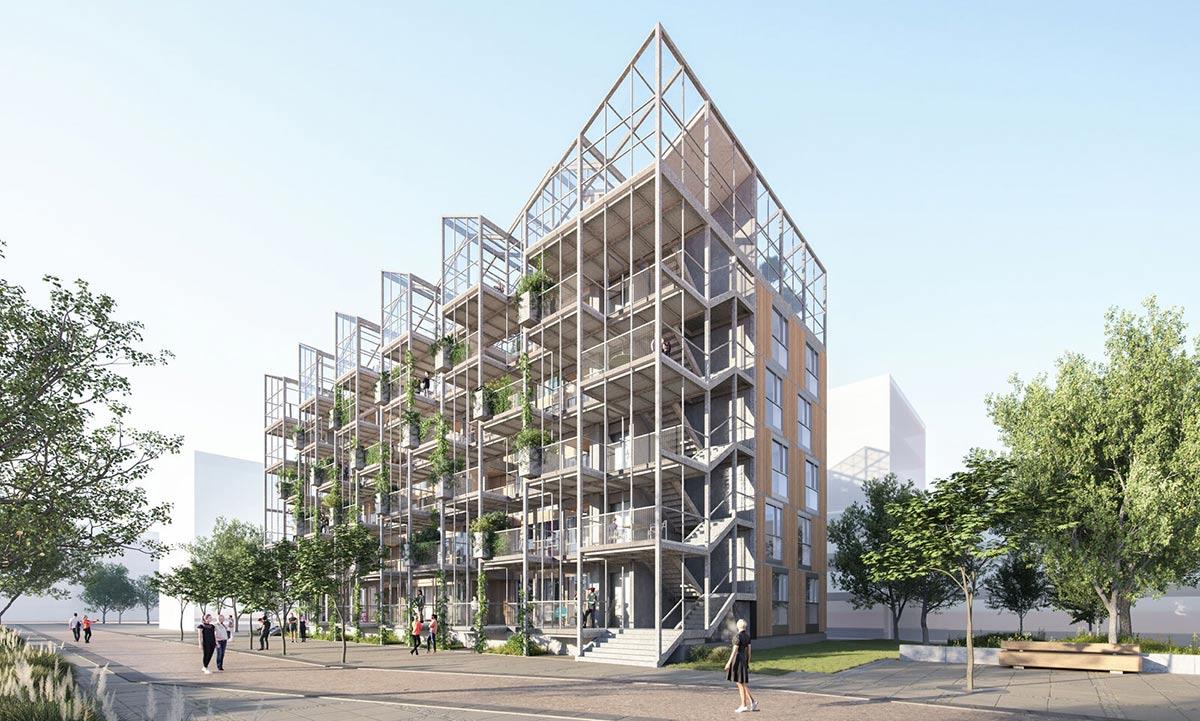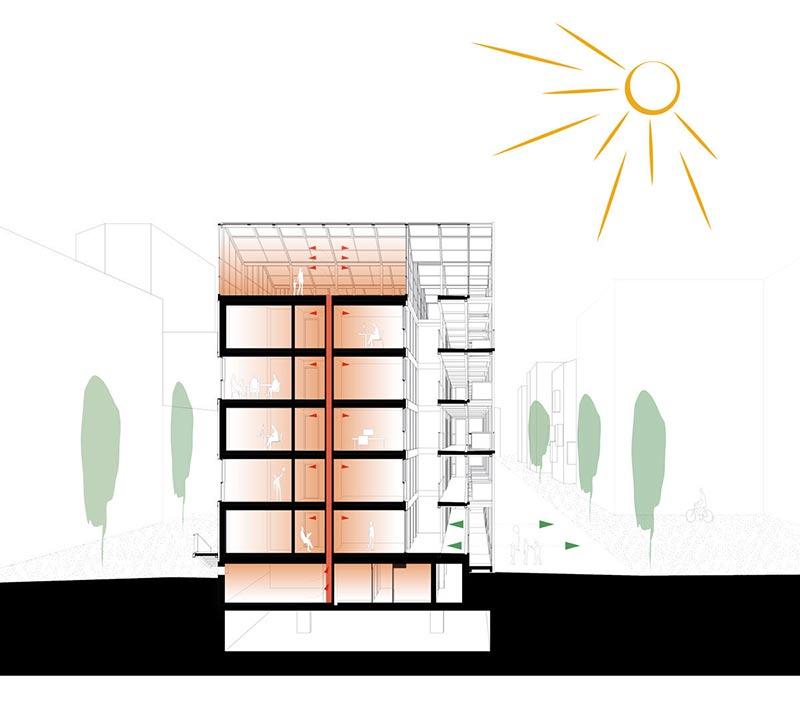Flourishing in a residential greenhouse
Bremen’s Überseeinsel district is a new, green neighbourhood currently under development. Affordable, sustainable and attractive living space will be on offer in the Residential Greenhouse. It is designed to be a home for both people and plants.
From the 1960s until some years ago, US company Kellogg’s manufactured cornflakes and other cereals here, revolutionizing European breakfast habits. However, the production machines came to a standstill, and according to city planners a new urban neighbourhood for the future is being developed in Bremen’s Überseeinsel district. The site between the Weser riverbank and the Europahafen harbour district is part of the transformation project “Überseestadt”, which is one of Europe’s largest urban development areas.
New urban space on industrial wasteland
According to the master plan by SMAQ and Man Made Land, this industrial wasteland will be transformed into ecologically sustainable neighbourhoods that enable small-scale interweaving and coexistence of living, working, education and leisure. Construction work is underway in Stephanitor, the first neighbourhood to be built here. In the sustainable energy concept, which strives to make Überseeinsel as carbon neutral as possible, future residents will be supplied with solar power, wind energy and a cooling system that utilizes the water of the River Weser.
The vibrant mix of transformed industrial buildings and sensitively integrated new builds lends the new neighbourhood a unique character. Studio flats are planned for the former Flakes factory, the rice storehouse is being transformed into an office building with a market hall, and the old silo towers have already become a hotel.
Subsidized flats in a modular timber structure
In the second row back from the edge of the harbour, the “Wohngewächshaus” – or Residential Greenhouse – has been designed by Viennese architecture firm Delugan Meissl. Their work is based on a study carried out by the architects on behalf of Überseeinsel GmbH. They were tasked with creating a living concept that met the client’s ambitious demands. “Inexpensive, energy-efficient construction with an aesthetic design. We are attempting to bring these parameters together in the Residential Greenhouse by DMAA,” says the real estate developer.
Inexpensive, energy-efficient construction with an aesthetic design. We are attempting to bring these parameters together in the Residential Greenhouse by DMAA.
Überseeinsel GmbH, real estate developer
Subsidized flats for families will cover a gross floor area of 5,065 square metres. According to the design, the complex is divided into three parts: a block of flats, a walkway at the front, and a greenhouse on the roof of the building. It is an exciting typology that aims to ensure that people and plants flourish equally and live together in a kind of symbiotic relationship.
Three-part structure
The core of the complex is the heated block of flats – a modular timber structure. All elements are entirely prefabricated at the factory and only need to be assembled on site.
The walkway at the front of the building offers several advantages: the semi-public open spaces enable social interaction, while giving residents the opportunity to create their own small garden.
The greenhouse on the roof is a win-win as far as energy goes. While the glass house benefits from the waste heat emitted by the flats, the second building shell creates a heat buffer for the residential core.
It is not only residents who can participate in the greenhouse’s urban farming concept: vegetables will also be grown commercially here in the future. Known as “farm-to-table”, this is a concept whereby locally grown vegetables end up on plates in restaurants and private kitchens.
Mobility re-imagined
In addition to an ambitious energy concept, mobility in this district has been examined rigorously as well. The result is a car-free space where no fossil fuels are used for travelling. “There are no conventional roads where cars can be used. Residents use car parks in the central neighbourhood or underground. From there at the latest, they continue on foot or by bicycle or they take the e-shuttle,” explains Überseeinsel GmbH.
There are no conventional roads where cars can be used. Residents use car parks in the central neighbourhood or underground. From there at the latest, they continue on foot or by bicycle or they take the e-shuttle.
Überseeinsel GmbH, real estate developer
At all the car parks, comprehensive infrastructure makes it as easy as possible for people to actually avoid using cars – this includes bike and car sharing, shopping facilities, and a direct connection to the public transport network. Pedestrian and cycle bridges connect Überseeinsel to the city. Some of the tarmac roads that were dedicated to transport will be unsealed as part of the site development, and spacious green areas and parks will feature prominently in Überseeinsel’s leisure offerings.
The 15-minute city
These plans are in line with an idea that is gaining popularity in urban planning: the 15-minute city. The concept was first proposed by French-Colombian urban planner Carlos Moreno in 2016. The model is based on car-free neighbourhoods in which everything people need to live – offices, supermarkets, childcare facilities and doctors – can be reached within a quarter of an hour.
As the pandemic showed, cities are currently ill-equipped to provide their residents with the resources they need in times of crisis. By decentralizing services, individual neighbourhoods can become self-sufficient again, with village-like structures. This enhances the quality of life for residents and is good for the climate as well. It also reduces air pollution, creates recreational space and curbs uncontrolled urban sprawl.
Text: Gertraud Gerst
Translation: Rosemary Bridger-Lippe
Visualizations: Delugan Meissl
